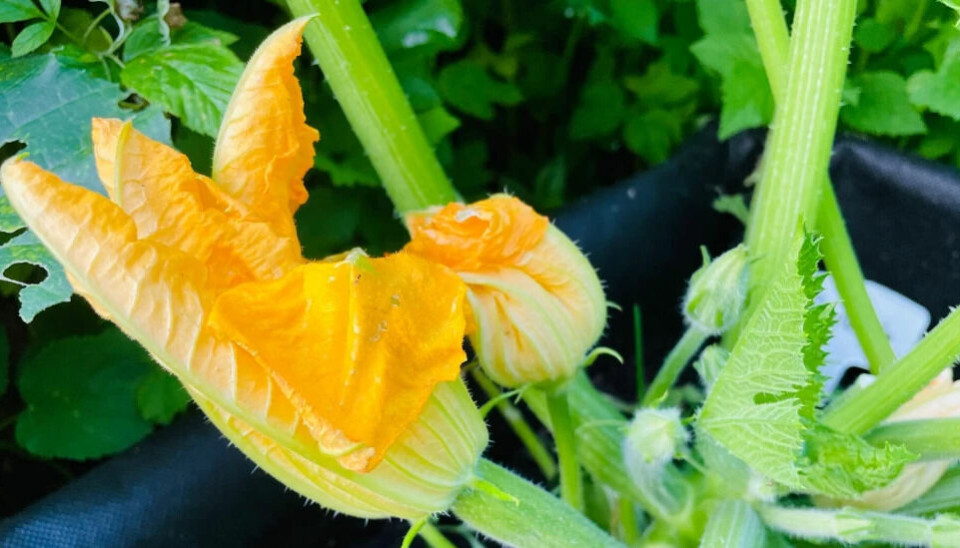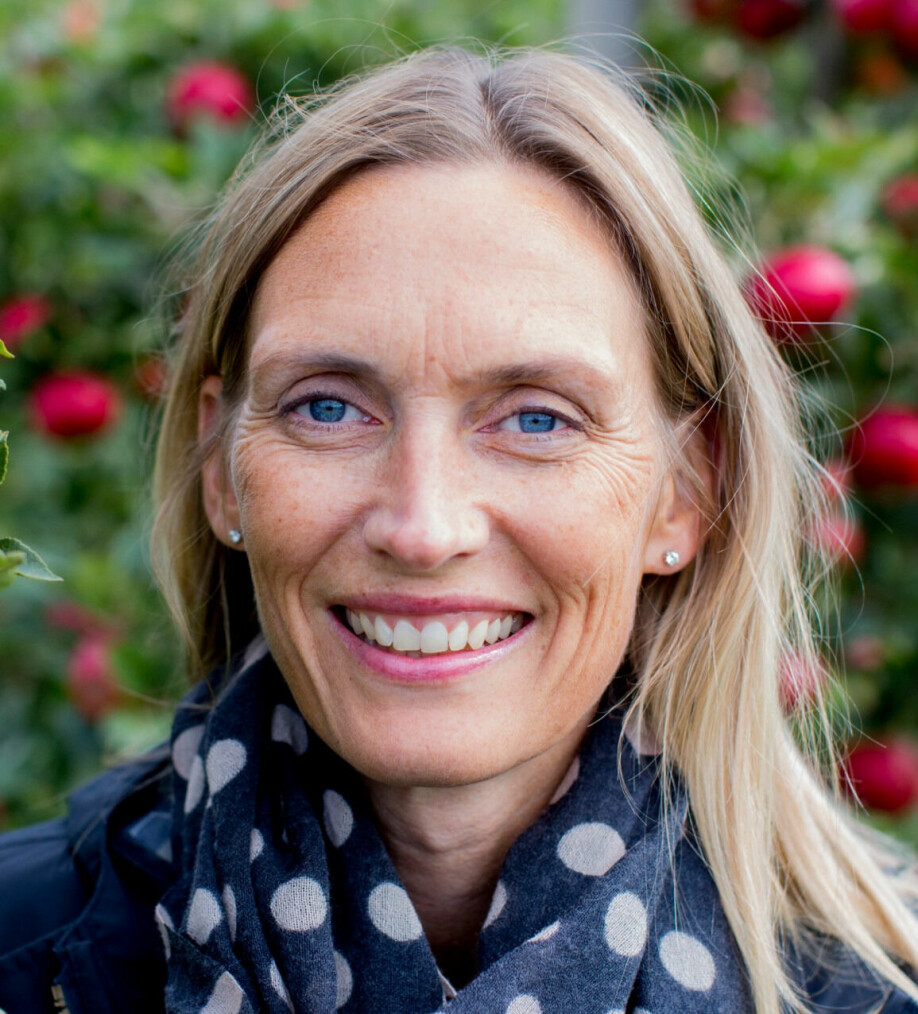
Here's how you can propagate your squash plant
Does the squash plant in your garden have lots of flowers but no squash? Squash often needs our help to be fertilised.
Squash plants light up the summer garden with their bright yellow flowers. But many gardeners are disappointed that very little happens after flowering.
“Squash have female and male flowers. Pollen from the male flowers must reach the female flower and attach itself there for fertilisation and fruit to grow,” Siv Fagertun Remberg tells sciencenorway.no.
She is an associate professor at the Department of Plant Sciences at the Norwegian University of Life Sciences, NMBU.
We must help nature
If you're lucky, the pollen from the male flower makes it to the female flower, but this depends on ideal conditions in the garden.
“When there are few flowers, few insects or other conditions that lead to poor pollination, there will be a low yield,” Remberg explains.
So we have to take action and help nature.
“You can simply pick a male flower and squish it against the female flower to ensure fruit,” Remberg says.
You don't need to use a brush because the female flower’s stigma is sticky and the pollen easily clings to it.
If you have squash plants in a greenhouse it is important to open the door or windows so that bumblebees can pollinate them.
The difference between male and female flowers

But how do you tell if the flower is male or female? The flowers themselves look quite similar, but by looking at the stem under the flower, you can tell which sex it is.
The male flower has a very thin stem, whilst the female flower has a tiny fruit on the stem below the flower.
When pollen sticks to the stigma, a pollen tube forms and grows down the style of the pistil. The pollen is transported into the ovules and the flower is fertilised. Then the fruit can start to grow, Remberg explains.
Squash pollen is too heavy
Botanists refer to this as ensuring pollination.
“To ensure pollination means to improve pollination so that all the seeds are fertilised,” Ramberg says.
Many species only need a little wind to be pollinated. But according to Remberg, squash pollen is too heavy.
“If the pollination is poor it can lead to poorer fruit quality. If the pistil is not fertilised, the plant will naturally abort,” the researcher says.
Squash flowers are edible
Squash plants usually produce more male flowers than they need. As long as there is always at least one left, you can remove the rest without it affecting how many squashes you end up with, Moseplassen writes (link in Norwegian).
You may have been served deep-fried squash blossoms at a restaurant. They are also tasty fried in butter.
If you grow squash, it's often fun to try to grow them as big as possible. But the small ones are the best in terms of taste and consistency.
And the more squash you pick, the more new fruit the plant makes.
Many are self-pollinating
Many plants are self-pollinating, while others rely on insects to be fertilised.
The northern highbush blueberry, for example, is self-pollinating. However, the berries taste better if they are pollinated by insects.
Some species depend on a particular type of insect to be pollinated.
“The fig was dependent on a special type of parasitic wasp for pollination. But now self-pollinating varieties exist,” Remberg says.
If you are in doubt as to whether your plant needs help with pollination, seek advice online or at a garden centre.
———
Translated by Alette Bjordal Gjellesvik.
Read the Norwegian version of this article on forskning.no
































